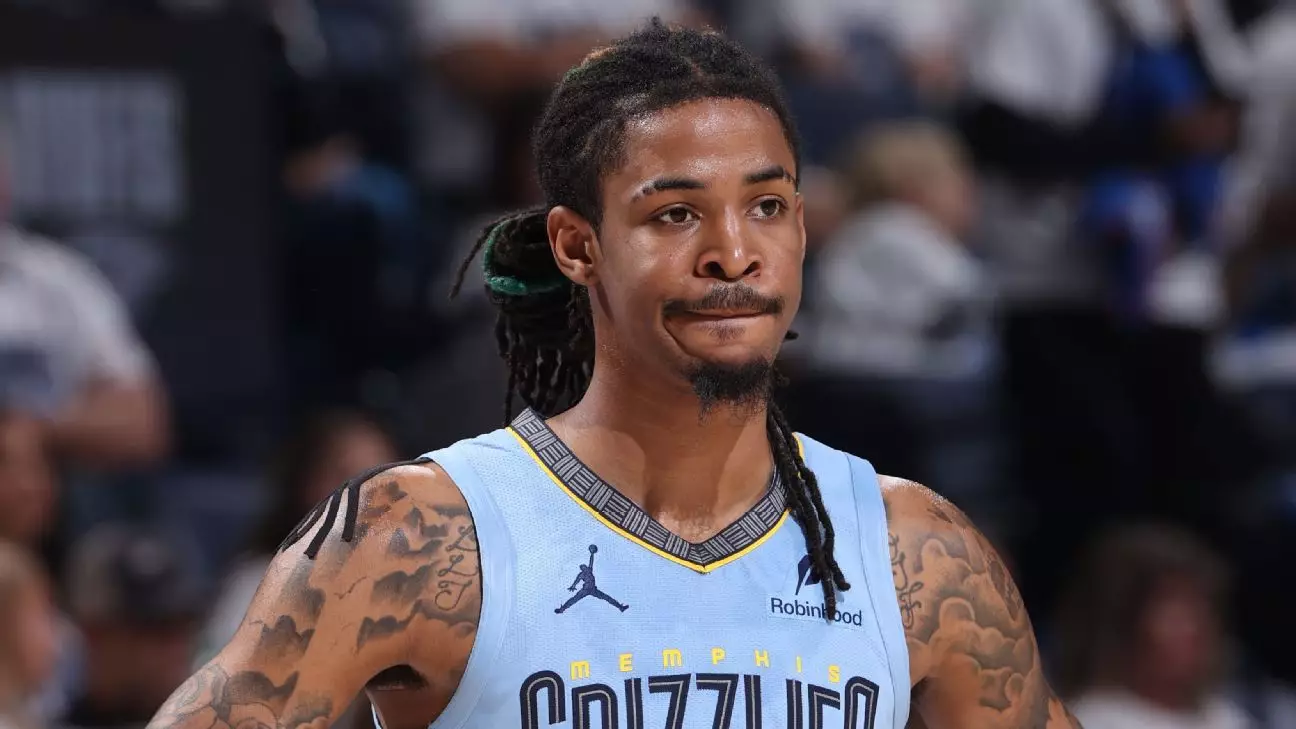In an era where athletes are often viewed through a dual lens of admiration and scrutiny, the case involving Ja Morant—a two-time NBA All-Star—has emerged as a poignant example of the complexities surrounding fame, accountability, and the legal system. The situation unfolded during a seemingly innocent pickup basketball game at Morant’s parents’ home in July 2022, where Joshua Holloway, then a high school student, alleged that he was assaulted by the star player. What started as a casual game morphed into a legal battle that would invoke questions of self-defense, civil immunity, and the responsibilities athletes hold as public figures.
Holloway, who now plays for Samford University, initiated the legal proceedings after an encounter that saw him hit Morant with a basketball in what he claimed was an aggressive move. The incident escalated when Morant responded by allegedly punching Holloway, an action that led Holloway to seek legal recourse. Here, we delve deeper into the implications of the judge’s ruling and the broader dialogue it ignites regarding accountability, especially for young athletes.
Legal Proceedings and Self-Defense Claims
As the case progressed, it became apparent that the legal narratives would heavily hinge on the notion of self-defense. Judge Carol Chumney’s ruling came as no surprise to many based on Tennessee’s “stand your ground” doctrine—a law that allows individuals to act with force if they feel threatened in their own domain. This aspect of the case raises eyebrows about what and who qualifies as a threat in the context of competitive sports. While Morant testified that he feared for his safety, Holloway’s assertions painted him as the aggressor. This fascinating contrast of testimonies illustrates the blurry lines that often define human interactions in high-stakes environments.
It is vital to consider the legal nuances at play here. Holloway, with his claim of being attacked, had the uphill task of proving that Morant’s self-defense plea should not stand. This power dynamic between the alleged victim and the high-profile defendant creates an awkward scenario where the interests of justice, public perception, and personal accountability intersect. The courtroom becomes a theater not only for the legal actors involved but for a broader audience grappling with expectations of sportsmanship.
The Role of Witness Testimonials
Key to the judge’s decision were testimonies from witnesses who were present during the altercation. Mike Miller, a former NBA player, provided insight by corroborating Morant’s account of the events. This aspect of the case serves to highlight how subjective narratives can be in emotionally charged situations. When testimonies differ, it becomes challenging to untangle the facts from the emotional responses of those involved. The implications of witnessing often hinge not just on what is said but on the authority of the individual providing the account—making the weight of Miller’s testimony particularly significant.
The ruling indicates that the credibility of witnesses plays a pivotal role in such cases. Here, the discrepancy between Holloway’s claims and the corroborative accounts underlines the importance of having reliable narratives to back allegations in the court of law. Moreover, the judge’s remarks on the responsibility that both Morant and Holloway hold as public figures further complicate their personal accountability.
Impacts on Youth and Public Figures
The conclusion of this case serves as a cautionary tale not only for Morant and Holloway but also for the broader community of aspiring athletes. The ruling includes a poignant reminder of their roles as leaders and inspirations for youth. Being in the limelight, their actions have repercussions that extend beyond themselves; they set examples that influence the next generation.
While they navigate their own paths as athletes, the moral expectations placed upon them to exhibit integrity both on and off the court cannot be overstated. The double-edged sword of fame carries with it not just accolades but significant responsibility. This case echoes a broader societal conversation about how emerging athletes can embody discipline, accountability, and leadership in their professional and personal lives.
The convergence of legal arguments, witness testimonies, and the responsibilities of young athletes in the public domain culminates in an impactful case that will likely resonate for years to come. Morant and Holloway’s journey serves as a reminder that in the world of sports, every action can be scrutinized, and every decision lays the groundwork for future responsibilities.

